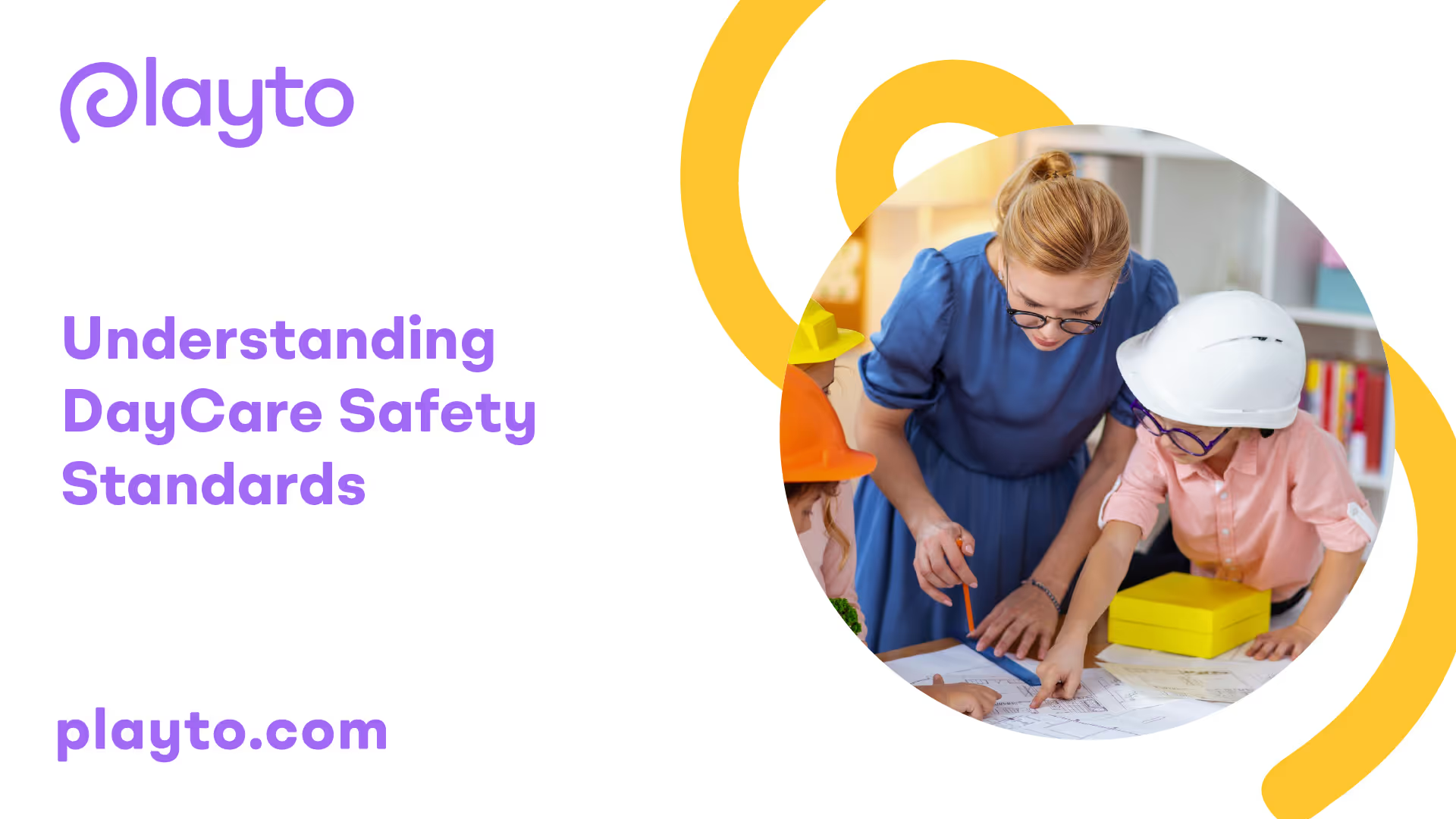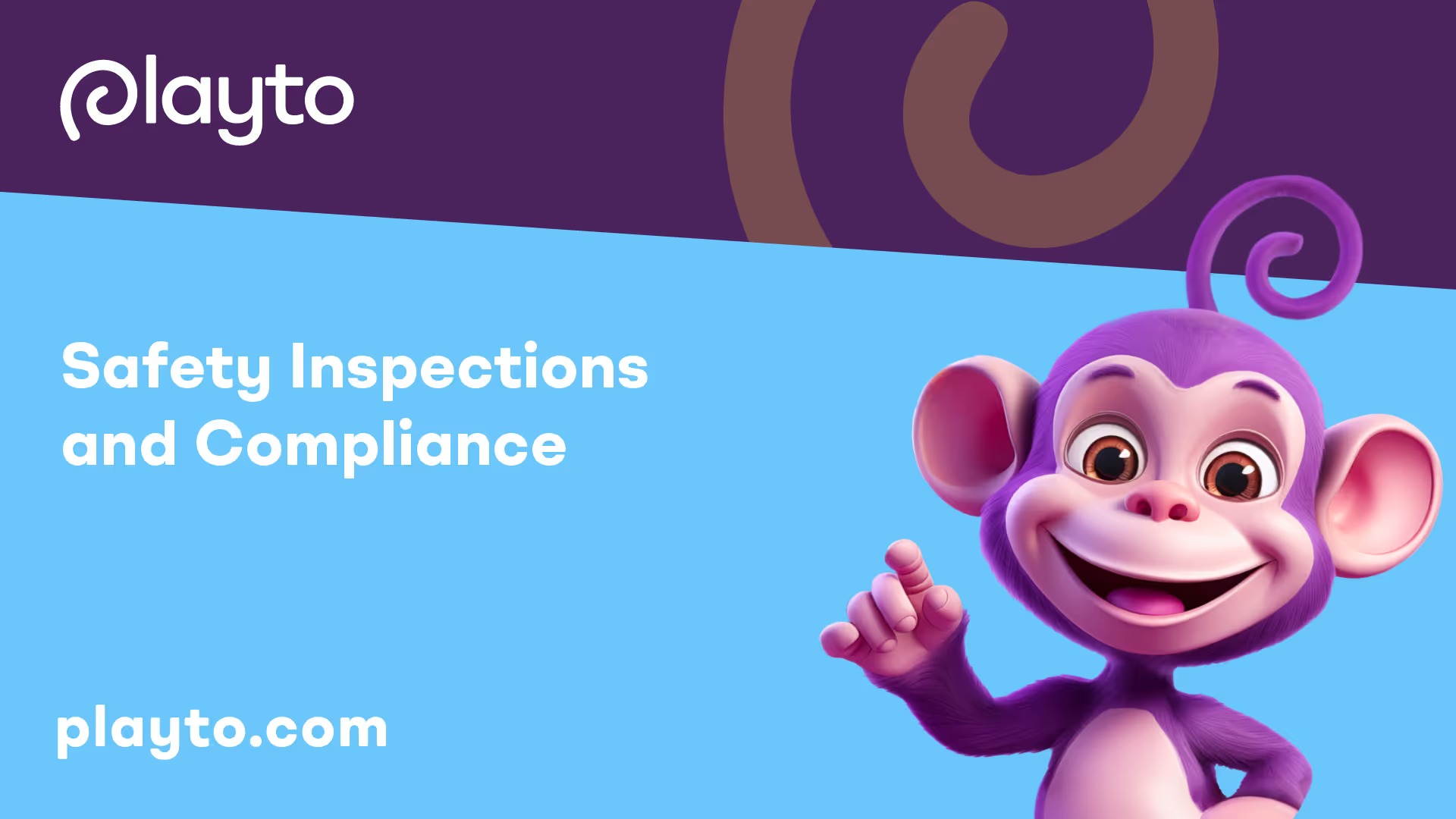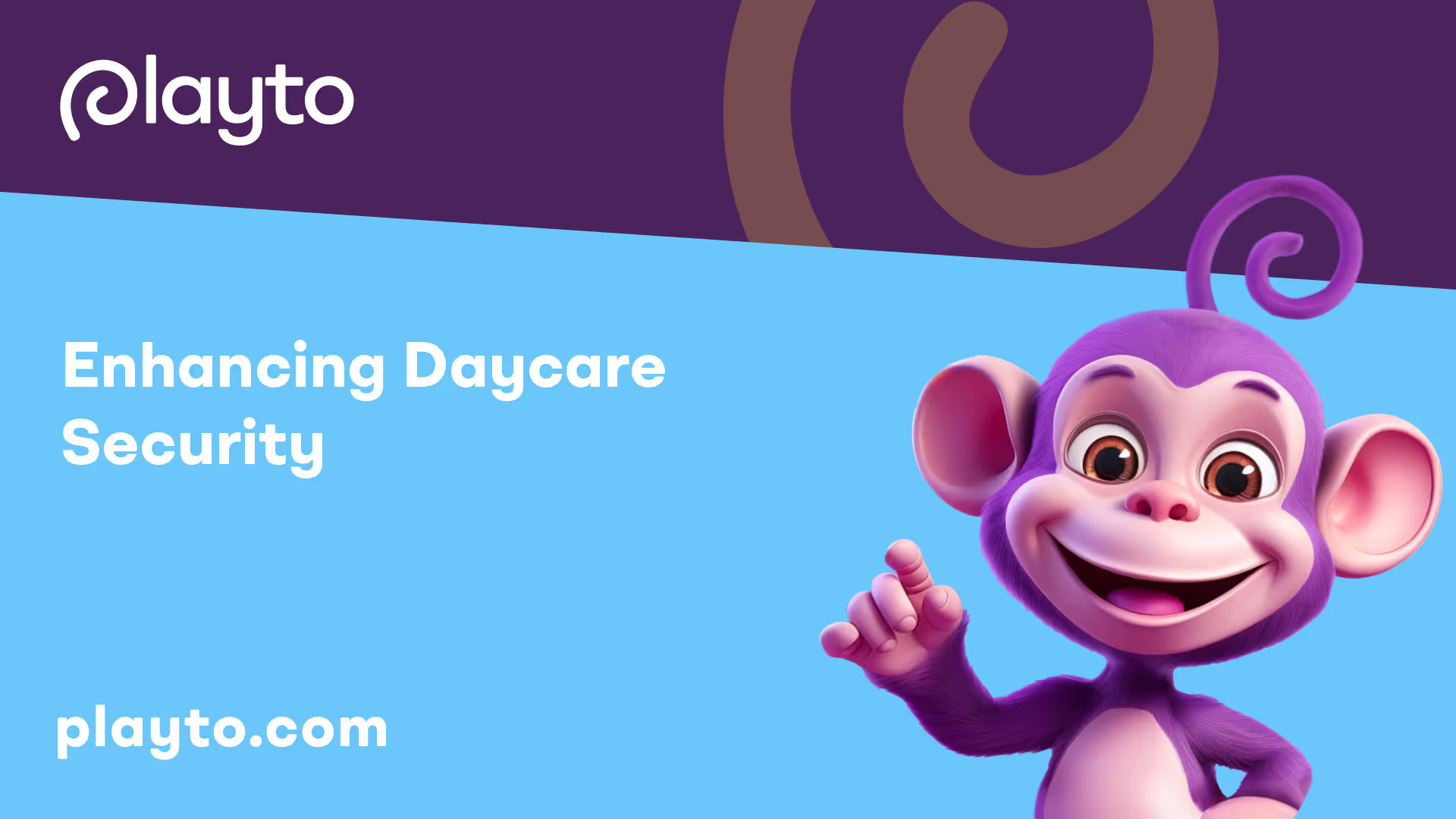
Understanding Daycare Safety Standards
When it comes to understanding daycare safety standards, daycare facilities in the state of New York must adhere to strict guidelines and regulations to ensure the well-being and security of the children under their care. Two critical aspects of daycare safety standards include emergency preparedness plans and staff training requirements.
Emergency Preparedness Plans
Daycare centers are required to develop and implement comprehensive daycare emergency preparedness plans to effectively respond to various emergency or disaster situations. According to the Caring for Our Children National Health and Safety Performance Standards Guidelines for Early Care and Education Programs (4th edition), these plans should be in writing and outline specific protocols for different types of emergencies. This includes procedures for evacuations, sheltering-in-place, communication strategies, and coordination with emergency services.
In New York, child care providers must have detailed evacuation and shelter-in-place plans tailored to the specific types of emergencies that may occur. These plans are crucial for ensuring the safety and well-being of both children and staff members during unexpected events. By conducting regular drills and reviewing and updating emergency procedures, daycare providers can better prepare for emergencies and minimize risks.
Staff Training Requirements
Ensuring that daycare staff members receive adequate training is fundamental to maintaining a safe and secure environment for children. In New York, licensed and registered childcare providers are mandated to complete a minimum of 30 hours of training every two years, with at least 5 hours completed annually. Additionally, 15 hours of training must be fulfilled within the first six months of service to guarantee that staff members are well-equipped to handle emergencies and provide quality care.
By undergoing regular training sessions, daycare staff can enhance their knowledge and skills in areas such as emergency response, first aid, child development, and safety protocols. This training not only benefits the staff members themselves but also contributes to the overall safety and well-being of the children in their care.
Effective daycare safety standards encompass detailed emergency preparedness plans and rigorous staff training requirements to ensure that daycare facilities in New York provide a secure and nurturing environment for children. By prioritizing emergency preparedness and ongoing staff education, daycare providers demonstrate their commitment to the safety and welfare of the children entrusted to their care.
Safety Inspections and Compliance

In the realm of daycare safety standards, ensuring compliance with safety regulations is paramount for the well-being of the children in daycare facilities. Safety inspections play a vital role in identifying and rectifying any potential hazards that may compromise the safety of the children. Let's delve into the indoor and outdoor safety checklists that are essential for maintaining a safe environment.
Indoor Safety Checklist
An indoor safety checklist is a comprehensive tool that aids child care centers in upholding high safety standards within their premises. This checklist covers various areas crucial for ensuring a safe indoor environment for children. These areas may include:
- Staff Training: Ensuring that staff members are well-trained in safety protocols and emergency procedures.
- Room Security: Implementing measures to control access to different areas within the facility to prevent unauthorized access.
- Play Area: Checking the play areas to ensure they are free from potential hazards and have adequate supervision.
- Infant Areas: Creating safe spaces for infants that are free from items that could pose choking hazards.
- Furnishings and Fixtures: Securing furniture and fixtures to prevent tip-overs and accidents.
- Safety Equipment and Procedures: Ensuring that safety equipment like fire extinguishers and first aid kits are readily available and that safety procedures are clearly outlined.
For a detailed insight into best safety practices for indoor environments, daycare providers can refer to resources such as Procare Software.
Outdoor Safety Checklist
Just as crucial as indoor safety, outdoor safety plays a significant role in providing a secure environment for children to play and explore. An outdoor safety checklist outlines various aspects that daycare centers should consider to maintain safety outdoors. These aspects may include:
- Staff Training: Ensuring that staff members are trained to supervise outdoor play areas effectively and respond to emergencies.
- Yard Setup and Maintenance: Regular inspection and maintenance of outdoor spaces to address any potential hazards like broken equipment or uneven surfaces.
- Play Equipment: Checking that all play equipment is in good condition, securely anchored, and age-appropriate for the children.
- Overall Environment: Assessing the outdoor space to ensure there are no sharp objects, poisonous plants, or other hazards that could harm children.
Daycare facilities can refer to resources like Procare Software for guidance on creating an effective outdoor safety checklist that aligns with the highest safety standards.
By diligently following indoor and outdoor safety checklists, daycare providers can create a safe and nurturing environment that prioritizes the well-being of the children under their care. Regular inspections and compliance with safety standards are key pillars in maintaining a secure and healthy daycare setting for all children.
Enhancing Daycare Security

When it comes to ensuring the safety and security of children in daycare facilities, implementing robust security measures is paramount. This section will delve into two key aspects of enhancing daycare security: advanced security equipment and child care management software.
Advanced Security Equipment
To bolster security measures at daycare centers, advanced security equipment plays a crucial role. Providers like Procare Solutions offer a range of cutting-edge solutions designed to fortify safety protocols within daycare settings. Keyless entry systems, biometric check-in scanners, and real-time monitoring features are among the technologies utilized to enhance security.
These security enhancements not only streamline access control for staff and parents but also provide an additional layer of protection against unauthorized individuals gaining entry to the premises. By leveraging advanced security equipment, daycare centers can instill confidence in families entrusting their children's care to these facilities, fostering a secure environment for all.
Child Care Management Software
In today's digital age, child care management software plays a pivotal role in bolstering security and operational efficiency in daycare facilities. Providers like Procare Solutions offer comprehensive software solutions that streamline various aspects of daycare management, including safety measures.
By utilizing child care management software, daycare centers can effectively track student attendance, manage staff-child ratios, and implement safety protocols seamlessly. This technological advancement not only enhances the overall operations of the center but also contributes to creating a safer environment for children under their care. For more information on how child care management software can benefit daycare security, visit Procare Software.
By incorporating advanced security equipment and leveraging child care management software, daycare providers can fortify their security infrastructure, promote a secure environment for children, and offer peace of mind to parents entrusting their little ones to these facilities. These measures underscore the commitment to ensuring the safety and well-being of every child in their care.
Ensuring Child Safety Measures
Ensuring the safety of children in daycare facilities is paramount, and there are specific measures in place to safeguard their well-being. Two crucial components of ensuring child safety are background checks and surveillance systems.
Background Checks
Background checks play a vital role in maintaining a secure environment for children in daycare centers. Adults working with children, including staff members and volunteers, must undergo comprehensive background checks to ensure they have no history of abuse or violence towards children, and whether they are listed on a sex offender registry. This thorough screening process helps in the prevention of potential risks and ensures that only trustworthy individuals are entrusted with the care of children.
Properly trained daycare staff should have certifications in CPR and first aid, along with background checks. This ensures that they are equipped to handle any emergencies that may arise and provide immediate assistance when needed [3]. Additionally, staff members should have training in early childhood education or related fields to ensure competent care and support the children's developmental growth.
Surveillance Systems
Surveillance systems, including security cameras, are commonly utilized in daycare settings to enhance security and provide oversight both inside and outside the facility [2]. These systems act as a deterrent for potential crimes, offer valuable evidence in case of emergencies, and provide families with the ability to access live video streams of their children's activities for added peace of mind.
By implementing surveillance systems, daycare facilities can monitor activities effectively, ensure the safety of all children under their care, and swiftly address any concerns that may arise. The presence of security cameras helps to create a secure environment for both children and staff, promoting transparency and accountability within the daycare setting.
When daycare centers combine stringent background checks with advanced surveillance systems, they create a comprehensive safety framework that prioritizes the well-being and protection of every child in their care. These measures not only offer reassurance to parents but also contribute to a nurturing and secure environment where children can thrive and grow confidently.
Security Measures in Daycare Facilities
Ensuring the safety and security of children in daycare facilities is of utmost importance. Implementing robust security measures is critical to providing a secure environment for both children and staff. Two key security measures commonly found in daycare facilities are controlled access and emergency alert systems.
Controlled Access
One fundamental security measure in daycare centers is controlled access, as highlighted by Brightwheel. Controlled access aims to restrict entry to the facility and enhance the safety of children and staff. This security measure includes various methods such as electronic door locks, security gates, fingerprint scanners, keycards, or codes for staff members and parents.
By utilizing controlled access systems, daycare facilities can monitor and regulate entry and exit points effectively. These systems help maintain accurate records of individuals entering and exiting the premises, offering an added layer of security and accountability. Controlled access not only safeguards against unauthorized entry but also ensures that only authorized individuals have access to the facility, enhancing overall security.
Emergency Alert Systems
In the event of emergencies, daycare facilities must have efficient emergency alert systems in place. According to Brightwheel, having emergency alert systems enables quick and effective communication with families and staff during critical situations. These systems can include audible alarms, text or email notifications, and mobile apps for real-time updates.
By utilizing emergency alert systems, daycare facilities can promptly notify families and staff about potential or active threats, facilitating coordinated safety responses. The ability to communicate swiftly during emergencies is crucial in ensuring the safety and well-being of everyone in the facility. Emergency alert systems play a vital role in emergency preparedness, enabling daycare centers to respond promptly to any unforeseen situations.
Security measures such as controlled access and emergency alert systems are essential components of daycare safety standards. By implementing these measures effectively, daycare facilities can create a secure environment that prioritizes the safety and protection of children, staff, and visitors. For more information on daycare safety standards and emergency preparedness plans, visit our article on daycare emergency preparedness plans.
Safety Training for Childcare Providers
Ensuring a safe environment for children in daycare settings involves comprehensive training for childcare providers. This training includes health and safety programs as well as adherence to state licensing regulations to maintain high standards of care.
Health and Safety Training Programs
Licensed and registered childcare providers in New York are required to complete a minimum of 30 hours of training every two years, with at least 5 hours completed annually. Moreover, within the first six months of service, providers must complete 15 hours of training. This training includes crucial topics related to child health, safety, and emergency preparedness.
An essential component of the training is the Foundations in Health and Safety e-learning course, which is mandatory for all licensed, reregistered, and legally exempt childcare providers in New York. This 5-hour online course must be completed within the first 3 months of employment for licensed and registered programs. Individuals who have undertaken a 15-hour Health and Safety classroom training after August 1, 2016, are exempt from taking the Foundations in Health and Safety e-learning course [4].
State Licensing Regulations
In addition to training requirements, childcare providers must adhere to state licensing regulations to operate legally in New York. These regulations set the standards for maintaining a safe and secure environment for children under care. Providers are required to have evacuation and shelter-in-place plans based on the type of emergency to ensure the safety of children and staff.
Evacuation plans are crucial for situations where conditions are safer outside the building, ensuring a swift and organized exit. On the other hand, shelter-in-place protocols are advised in specific emergencies to isolate individuals from external hazards, emphasizing the importance of proactive safety measures [5].
By prioritizing health and safety training programs and complying with state licensing regulations, childcare providers in New York can uphold the highest standards of care and ensure the well-being of the children under their supervision. These measures not only enhance the quality of care provided but also contribute significantly to creating a safe and nurturing environment for children in daycare facilities.
References
- [1]: https://www.procaresoftware.com/blog/indoor-and-outdoor-safety-checklist-for-child-care-centers/
- [2]: https://mybrightwheel.com/blog/daycare-security
- [3]: https://www.care.com/c/10-signs-of-a-safe-day-care/
- [4]: https://www.childdevelopmentcouncil.org/providers/training-requirements/
- [5]: https://www.childcareaware.org/our-issues/crisis-and-disaster-resources/child-care-emergency-preparedness/
.avif)